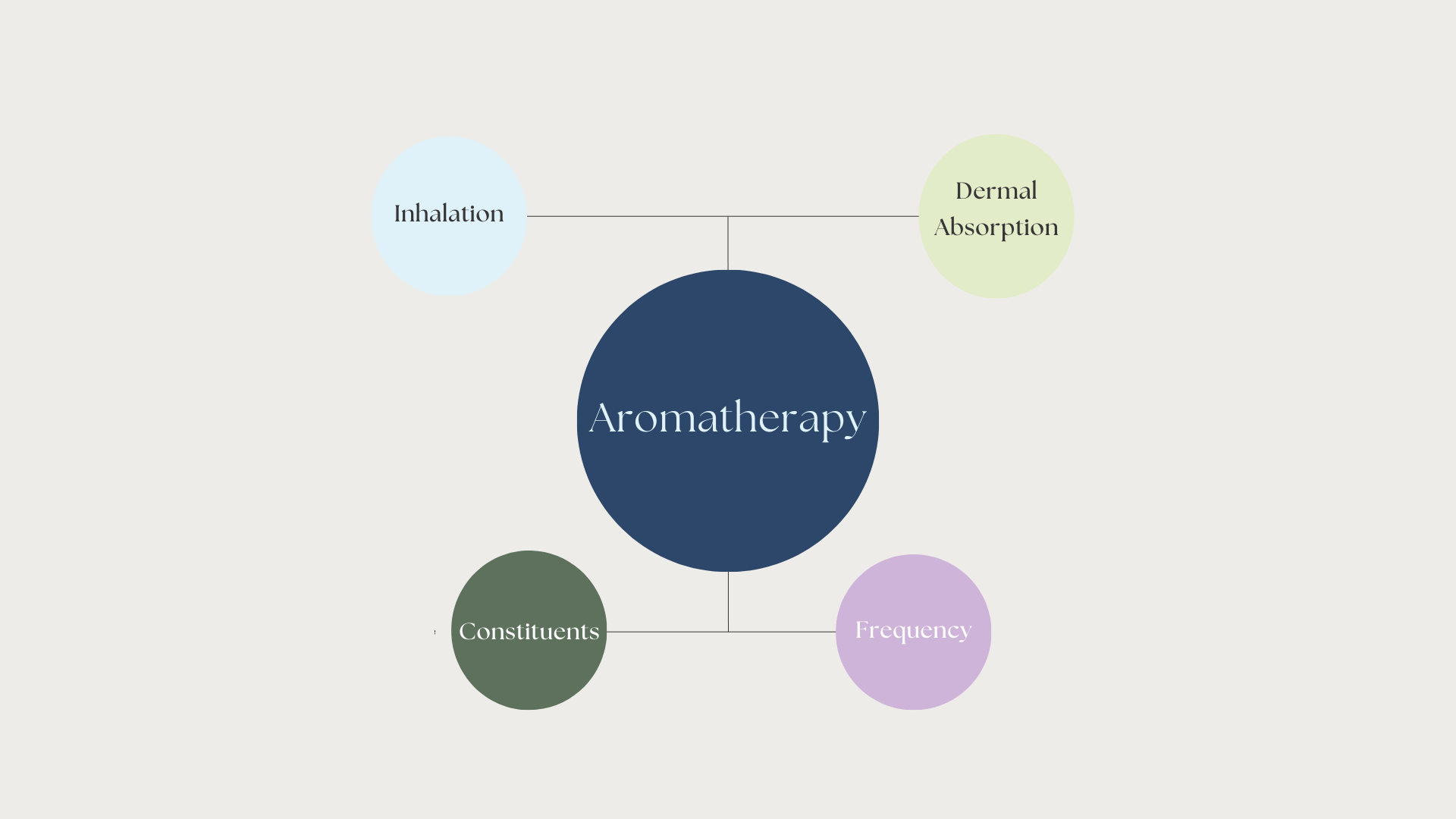How does Aromatherapy work?
Aromatherapy can be administered topically or via inhalation.
The use of essential oils can help maintain optimal health and balance through their chemistry and frequencies.
Aromatherapy affects the nervous system, including the brain, spinal cord, and nerves. Inhaling essential oils triggers olfactory receptors in the nose, sending signals to the limbic system and hypothalamus. The limbic system regulates emotions and memories, releasing hormones like serotonin, endorphins, and dopamine, which regulate bodily functions and alleviate anxiety and pain perception. Aromatherapy also makes direct contact with respiratory structures, leading to various health benefits.
Inhalation
Another effective way to introduce essential oils into the body is through skin application or dermal absorption. When appropriately diluted and formulated, essential oils applied to the skin can have both localized and systemic effects.
Dermal Absorption
Essential oils are composed of natural plant chemical components, which are physical substances that have therapeutic activity validated through research.
Constituents
Each cell in our body vibrates at a unique frequency, similar to the Earth's natural vibration. As a result, vibrations and the associated electromagnetic energy can have a significant impact on our health by influencing cellular activity. Essential oils resonate with our body's molecules at a molecular level. They increase the body's natural electromagnetic frequency, promoting healing and maintaining overall well-being. According to clinical research, essential oils have the highest frequency of any natural substance known to us. This high frequency creates an inhospitable environment for harmful agents. Essential oils can address both physiological and psychological effects of Qi stagnation in Traditional Chinese Medicine.
Frequency

